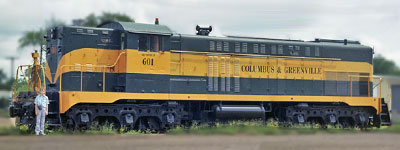


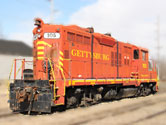




Shortline




Arkansas & Louisiana Missouri Railway"Personalized Transportation" |
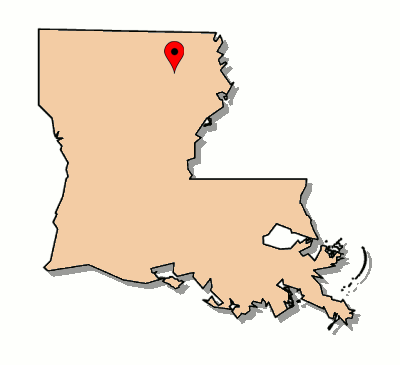
 rom 1920 to 1991, the Arkansas & Louisiana Missouri Railway operated a 53 mile shortline from Monroe, Louisiana, north through Bastrop to Crossett, Arkansas. The previous operator of the line, organized in 1915 and known as the Arkansas & Louisiana Midland Railway, proved unsuccessful and led to the formation of the A&LM. The line remained an independent operation until 1991, when Georgia-Pacific Corporation organized the Arkansas, Louisiana & Mississippi Railroad to purchase the A&LM. In 2004, shortline operator Genessee & Wyoming purchased several lines in the area, including the A&LM. The shortline carried lumber, paper, forest products, and chemicals. Interchange partners over the years included Missouri Pacific and later Union Pacific, Illinois Central Gulf and later MidSouth, the Fordyce & Princeton, and the now abandoned Ashley, Drew & Northern.
rom 1920 to 1991, the Arkansas & Louisiana Missouri Railway operated a 53 mile shortline from Monroe, Louisiana, north through Bastrop to Crossett, Arkansas. The previous operator of the line, organized in 1915 and known as the Arkansas & Louisiana Midland Railway, proved unsuccessful and led to the formation of the A&LM. The line remained an independent operation until 1991, when Georgia-Pacific Corporation organized the Arkansas, Louisiana & Mississippi Railroad to purchase the A&LM. In 2004, shortline operator Genessee & Wyoming purchased several lines in the area, including the A&LM. The shortline carried lumber, paper, forest products, and chemicals. Interchange partners over the years included Missouri Pacific and later Union Pacific, Illinois Central Gulf and later MidSouth, the Fordyce & Princeton, and the now abandoned Ashley, Drew & Northern.


ALM company map / collection
Steam Motive Power
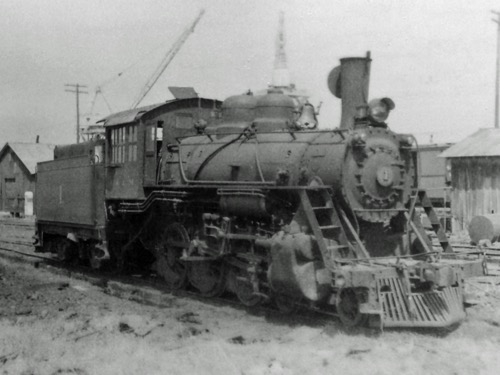
Arkansas & Louisiana Missouri #1
Baldwin 4-6-0 (1920) / Huttig, Ar / collection

Arkansas & Louisiana Missouri #31
Baldin 4-6-0 (1920) / Monroe, La / collection
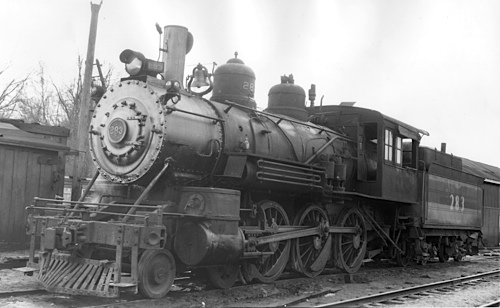
Arkansas & Louisiana Midland #283
Cooke 4-6-0 (1903) / Monroe, La / collection
Diesel Motive Power
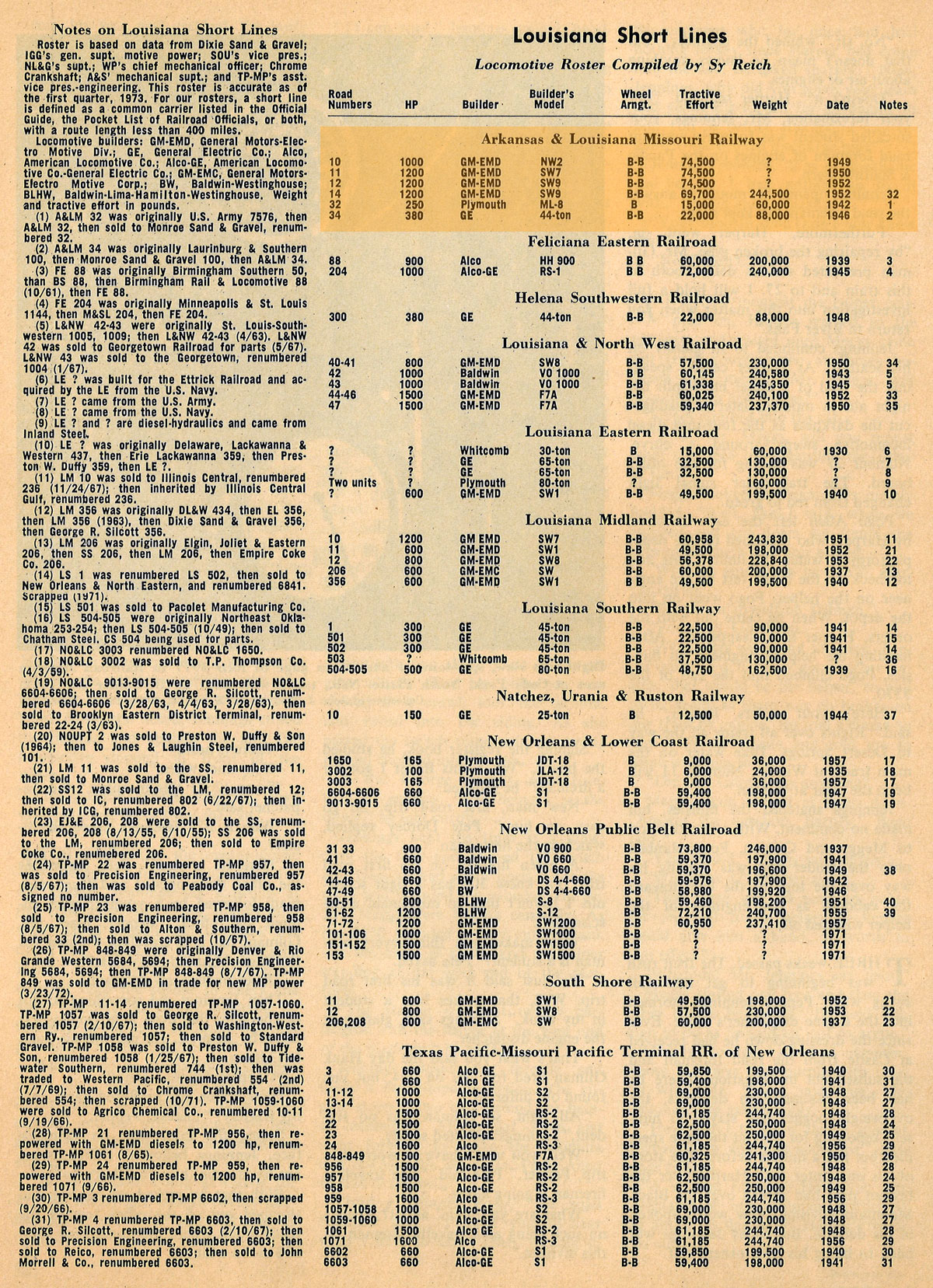
from Railroad magazine
- Sy Reich - Jul 1973 / collection
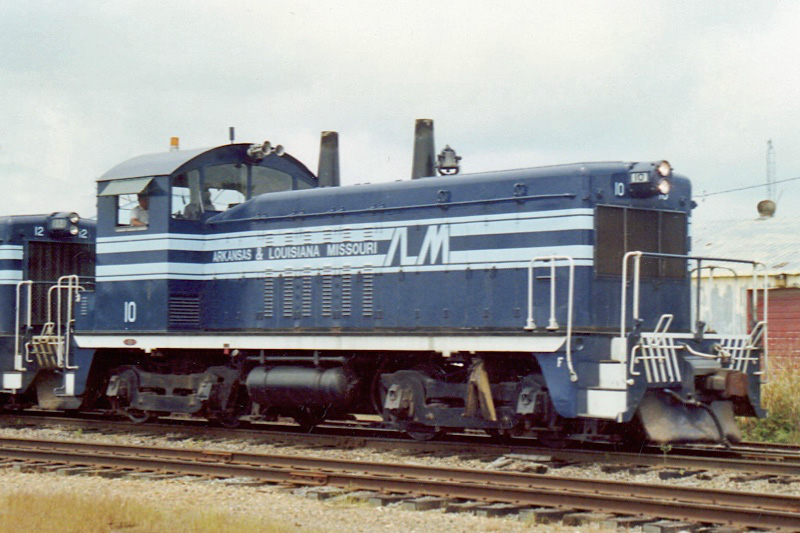
Arkansas & Louisiana Missouri #10
Monroe, La / Jul 1989 / RWH


Arkansas & Louisiana Missouri #10
then to Georgia Pacific #1001

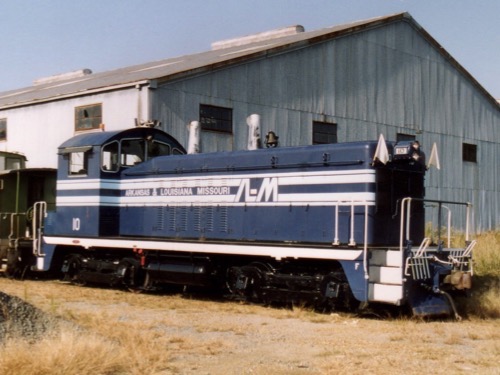
North Monroe, La / Nov 1992 / RWH
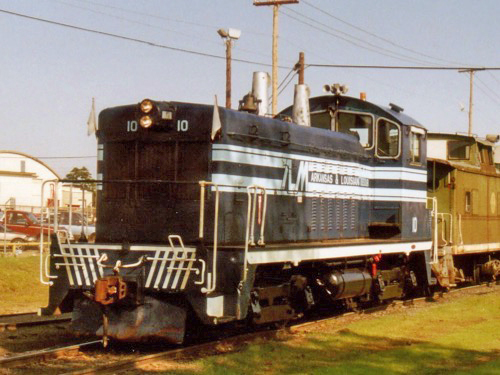
Crossett, Ar / Nov 1992 / RWH

Arkansas & Louisiana Missouri #14
Bastrop, La / Jul 1989 / JCH


Arkansas & Louisiana Missouri #14
to Chattahoochee Industrial #14
to Redmont #14
to Arkansas & Louisiana Missouri #14


Bastrop, La / Jul 1989 / JCH
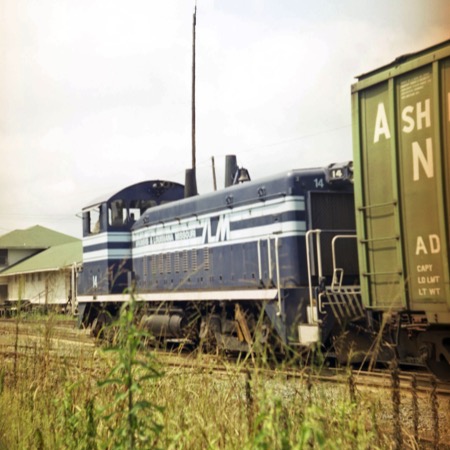
Bastrop, La / Jul 1989 / JCH

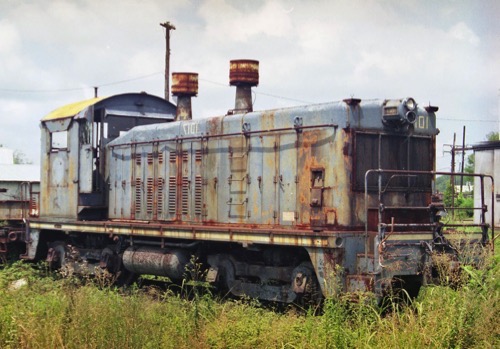
Arkansas & Louisiana Missouri #1017
EMD NW2 / Monroe, La / Jul 1989 / RWH
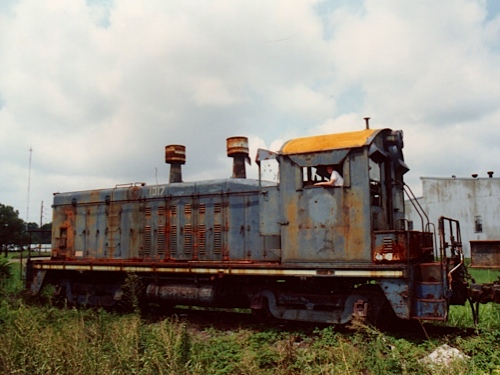
Monroe, La / Jul 1989 / JCH
Rolling Stock
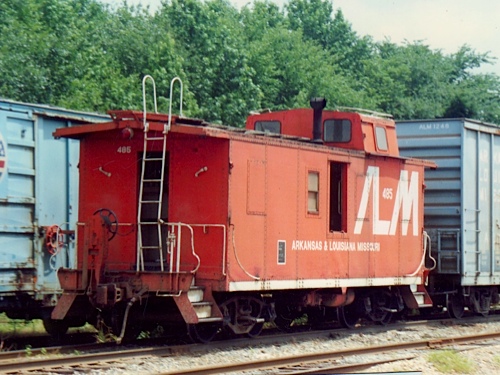
Arkansas & Louisiana Missouri #485
caboose / Monroe, La / Jul 1989 / RWH
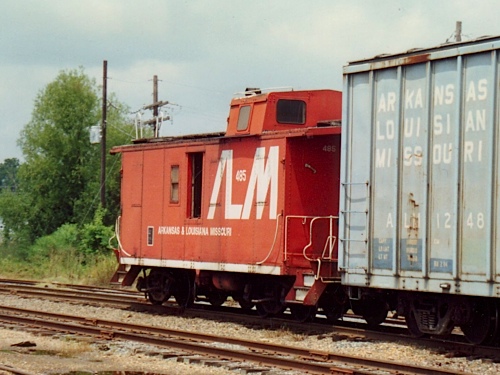
Monroe, La / Jul 1989 / RWH
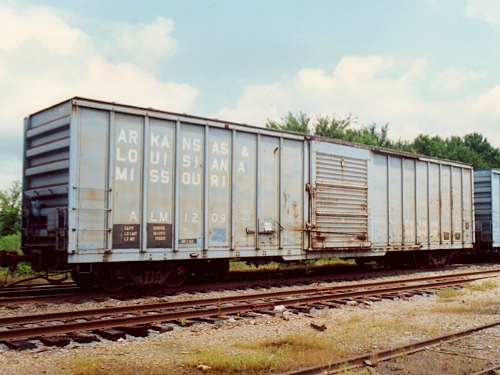
Arkansas & Louisiana Missouri #1209
50' boxcar / Monroe, La / Jul 1989 / RWH
Locations

Monroe shops
Monroe, La / Jul 1989 / RWH


Jul 1989
 Double-headed Drag through Monroe
Double-headed Drag through Monroe



I always explain to the uninitiated that chasing trains is like fishing: sometimes it just comes down to being at the right spot at just the right time. In the summer of 1989, dad and I were in the right place at just the right time to see the Arkansas & Louisiana Missouri paying the bills. After taking some pictures of the railroad's modest shops along their right-of-way, I heard a horn from the south and saw a headlight coming in our direction. It was easy to see that, whatever it was, they were moving slowly. As the train finally passed the shops and came into view, it was easy to see why they were crawling along: easily a 100+ car train, and in the care of two aging Electro-Motive switchers. Nos. 10 and 12 were working hard, earning their keep and fighting for each foot. As they ground past our location, loud and large, dad tapped me on the shoulder and pointed to the movers. "Look at that," he said, "no MU between them. Two crews!" He was right, of course. There was an engineer in each cab, and they were working together to keep this remarkable load in coordinated motion. If I close my eyes today, I can still hear the grind of those two 567s wound up in 8 and working hard, aspirating loudly and keeping Monroe mindful of the railroad's presence and purpose. The crew gave us a friendly wave, and then we watched as car after car inched on by us. We stopped counting around 100. Loaded pulpwood racks eventually gave way to a sea of light blue A&LM 50' boxcars -- all of it, destined for the mills to the north.
Double the haulers with double the crew, working hard to double the digits of miles per hour so the mills can do their thing.


all photos Monroe, La / Jul 1989 / RWH

I'm always grateful to get an email from railfan friend and former shortline president Russell Tedder, who wrote up some fine memories after looking at our Arkansas & Louisiana Missouri page. Russell writes:
 Thanks, Ralph for sharing your magnificent website for the A&LM. (Be sure to get the order of the initials right which you have. It was followed by AL&M, the G-P version.) From your beautiful steam shots to the narrative and images of the train rides, I enjoyed a fresh look at your photography, and your Dad's I might say as well.
Thanks, Ralph for sharing your magnificent website for the A&LM. (Be sure to get the order of the initials right which you have. It was followed by AL&M, the G-P version.) From your beautiful steam shots to the narrative and images of the train rides, I enjoyed a fresh look at your photography, and your Dad's I might say as well.
Old timers used to like to tell of more than one occasion, the A&LM had one or more places where water from heavy and flooding rains covered the rail. This put the diesels out of business because the water would get in their traction motors somewhere between 3 and 4 plus inches over the rails. On these occasions, Ten-Wheeler No. 1 would be fired up and replace the hapless diesels on the Crossett Man's runs from Bastrop to Crossett. You may remember that "Man" was one of two designations for A&LM's two trains. The afternoon job was the Bastrop Man, thus his designation. This ties into your scenes of the double header "walking" out of Monroe. Let me guess, that should have been on a Monday, ordinarily speaking, because A&LM strictly observed the Commandment that "Thou shalt not work on the Sabbath day" (my paraphrase). Thus since most of A&LM's interchange traffic was received from Monroe connections, one of the dark blue switchers could hardly budge the entire train, and a true double header could mostly be depended on for Monday morning. I never made a special trip to watch the double-header leave Monroe, but I am sure the coordination required by the dueling engineers was done with precision. Nothing sloppy on the A&LM; employees and company believed in doing it by the book as demonstrated by precise application of the whistle at road crossings with clear distinction between the long and short blasts of the whistle from the head or lead engine.
Although I never got to see the double-header leave Monroe, I did on a few occasions by pure chance catch up with the Monday morning train in the white cotton fields north of the Bayou at Monroe, white flags waving in the wind of 25 mph speed limit and the prime movers competing for sound with trains on Cajon Pass or other challenging grades. The main job of engineer on 2nd unit was to keep his eye on engineer on the first unit, and duplicate in a timely manner his manipulations of the throttle and brake levers, forewarned by hand signals as to the lead engineer's immediate intentions. The Crossett Man would set out all the cars except those for Crossett in the Bastrop Yard, and continue on to Crossett and return to Monroe in a more normal operating mode. Meanwhile the Bastrop Man would switch the Bastrop mill and other customers and make up a train for Monroe which he would take in at the end of the day. I am rambling back and forth but back to the double-header at Monroe, coming out of the former ICG interchange which soon turned into the A&LM mainline was no slouch of a grade. With an S curve providing extra resistance, it was a challenge for one unit on most days.
Thanks again for adding to our current memories of A&LM's Monroe double headers.

Bastrop depot
Bastrop, La / Jul 1989 / RWH
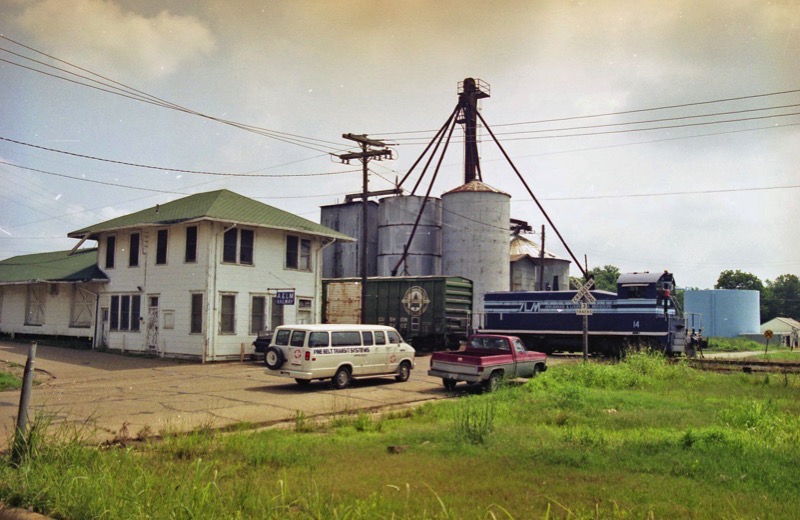
Bastrop, La / Jul 1989 / RWH


Jul 1989

Bastrop, La / Jul 1989 / RWH

Bastrop, La / Jul 1989 / RWH

Bastrop, La / Jul 1989 / RWH

Bastrop, La / Jul 1989 / RWH
 1992 NRHS Excursion
1992 NRHS Excursion
 In November of 1992, the Southeast Louisiana chapter of the National Railway Historical Society sponsored a Saturday excursion on the then Arkansas, Louisiana & Mississippi Railroad, now under Georgia-Pacific ownership. The excursion coupled veteran A&LM NW2 #10 with two cabooses and the NRHS chapter coach. The consist departed Monroe, La, made a stop in Bastrop, performed a photo run-by near the Arkansas border, and turned mid-trip at the Crossett, Ar, mill complex. The train then returned to Monroe by the same route.
In November of 1992, the Southeast Louisiana chapter of the National Railway Historical Society sponsored a Saturday excursion on the then Arkansas, Louisiana & Mississippi Railroad, now under Georgia-Pacific ownership. The excursion coupled veteran A&LM NW2 #10 with two cabooses and the NRHS chapter coach. The consist departed Monroe, La, made a stop in Bastrop, performed a photo run-by near the Arkansas border, and turned mid-trip at the Crossett, Ar, mill complex. The train then returned to Monroe by the same route.

Monroe, La / Nov 1992 / RWH

Bastrop, La / Nov 1992 / RWH

Crossett, Ar / Nov 1992 / RWH

Nov 1992 / RWH

Crossett, Ar / Nov 1992 / RWH

Nov 1992 / JCH

Nov 1992 / JCH

Nov 1992 / RWH

Crossett Cannonball
Nov 1992 / RWH

Crossett, Ar / Nov 1992 / RWH

Crossett, Ar / Nov 1992 / RWH

Bastrop, La / Nov 1992 / RWH

Monroe, La / Nov 1992 / JCH
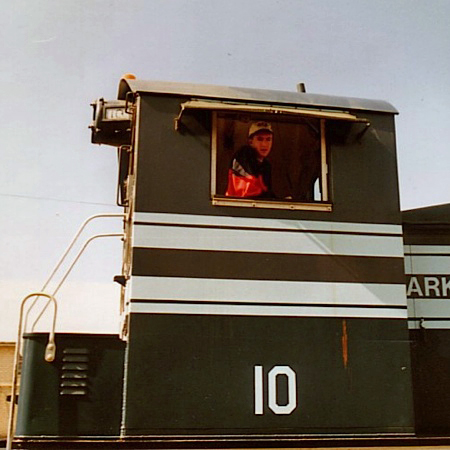
Monroe, La / Nov 1992 / JCH

Monroe, La / Nov 1992 / JCH
Links / Sources
- Wikipedia article for successor Arkansas, Louisiana & Mississippi
- Genesee & Wyoming corporate website
- Diesel Shop roster for successor Arkansas, Louisiana & Mississippi
- Charles W. McDonald, Diesel Locomotive Rosters - Third Edition (Kalmbach, 1992) 19
- Edward A. Lewis, American Shortline Railway Guide - Fifth Edition (Kalmbach, 1996) 30-31
